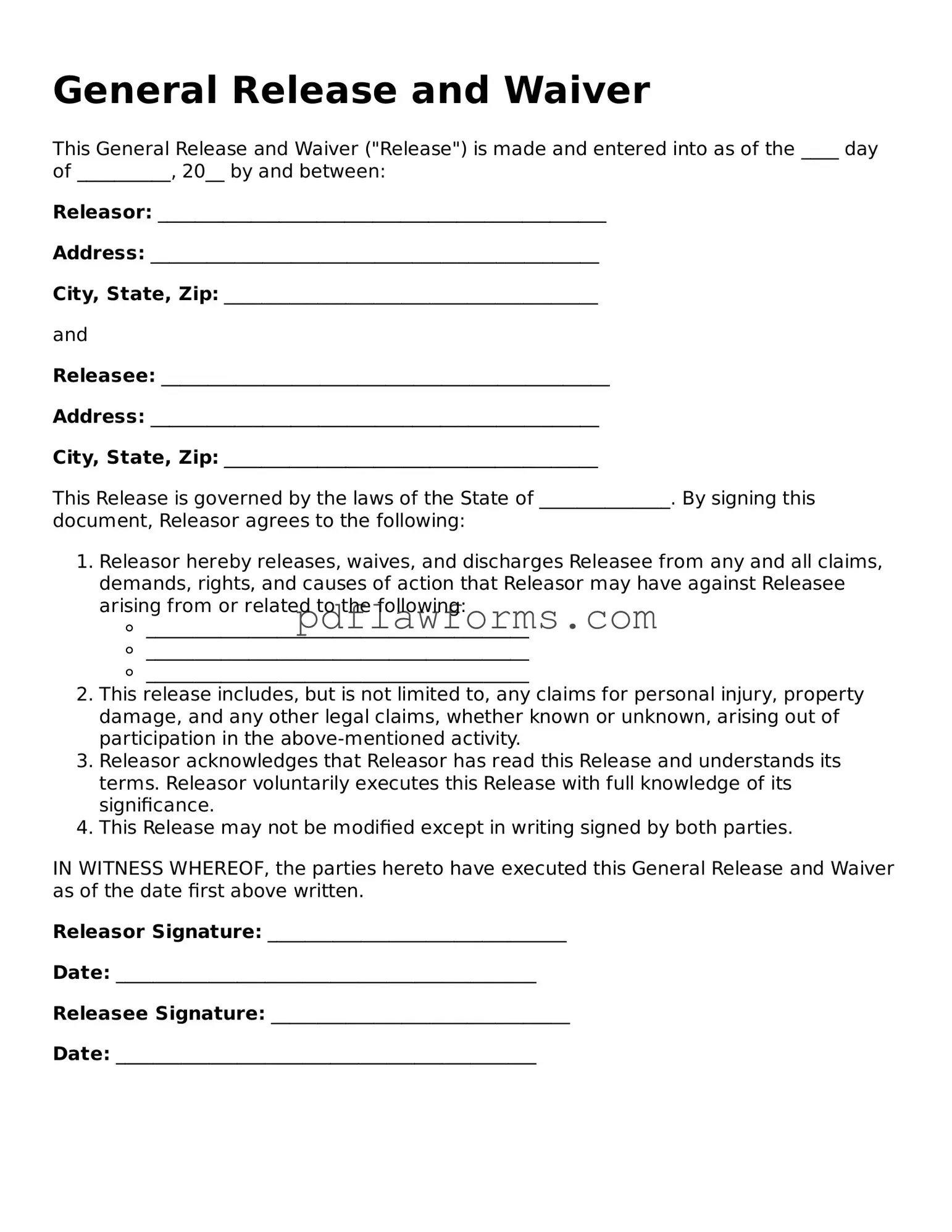The General Release and Waiver form is an important legal document that individuals and organizations use to protect themselves from potential claims or liabilities. By signing this form, a person voluntarily relinquishes their right to pursue legal action against another party for any past, present, or future claims related to a specific event or activity. This could range from participation in sports events to various services provided. The form typically includes essential details such as the names of the parties involved, a clear description of the activities covered, and a statement confirming that the signer understands the risks involved. It also emphasizes that the individual is waiving their right to sue, which is a significant commitment. Understanding the implications of this document is crucial, as it not only serves to protect the releasing party but also helps ensure that all participants are aware of the inherent risks associated with the activity in question. Overall, the General Release and Waiver form is a valuable tool for managing risk and fostering transparency between parties.
